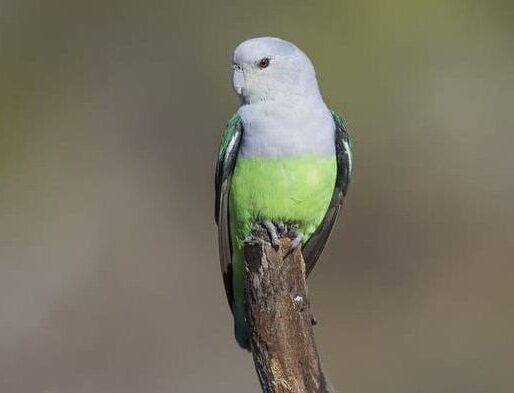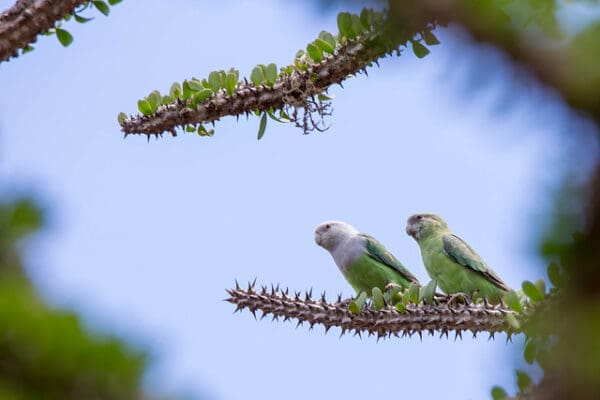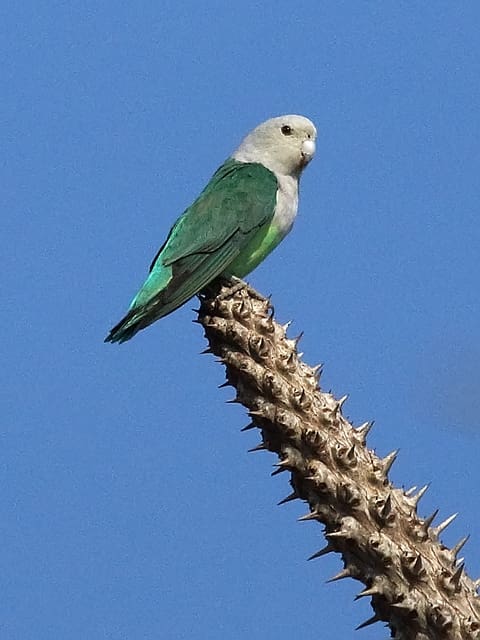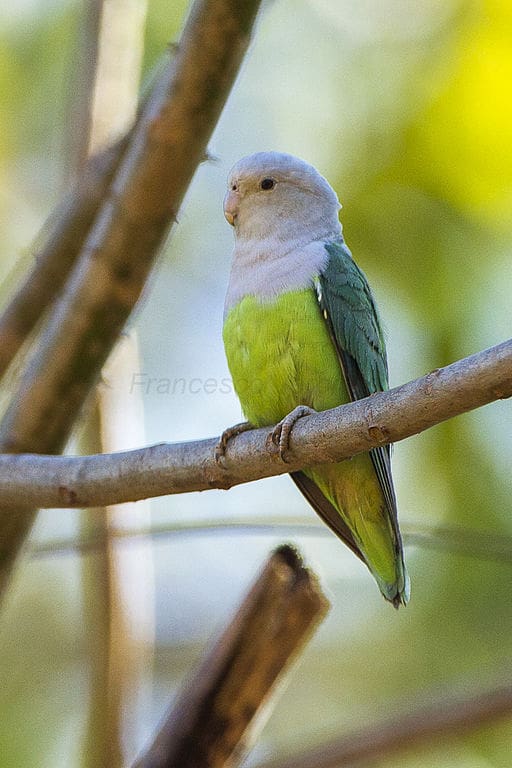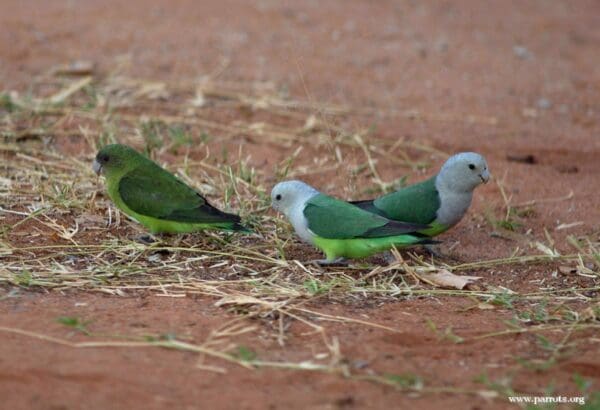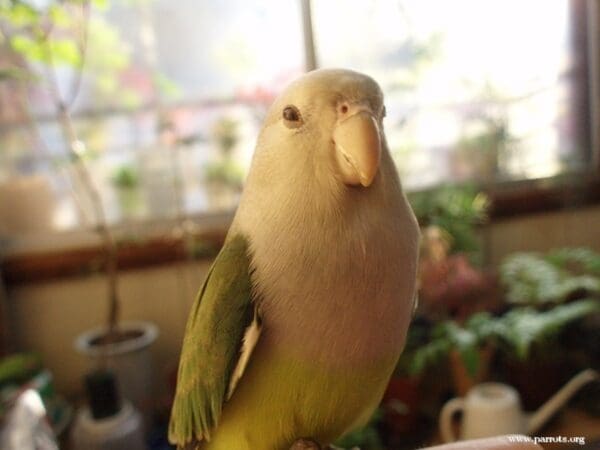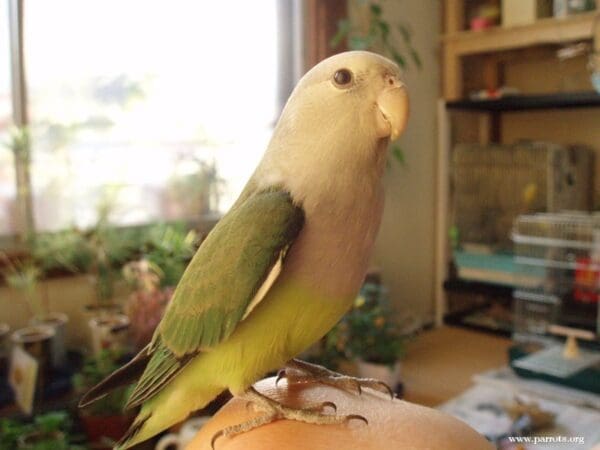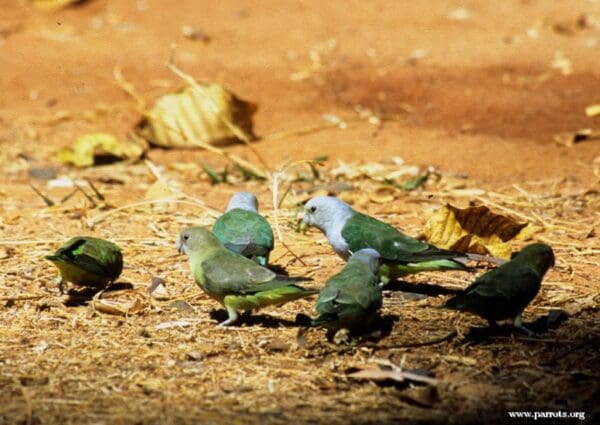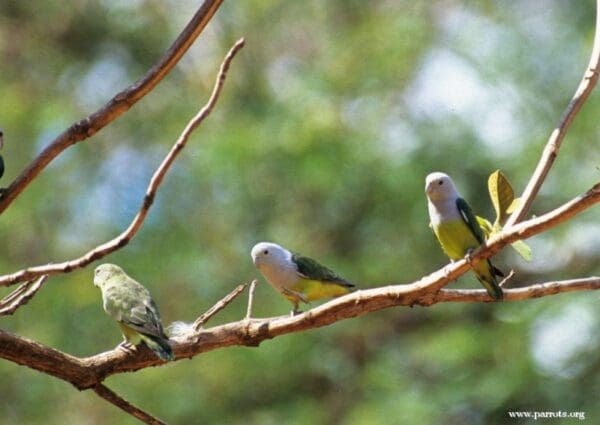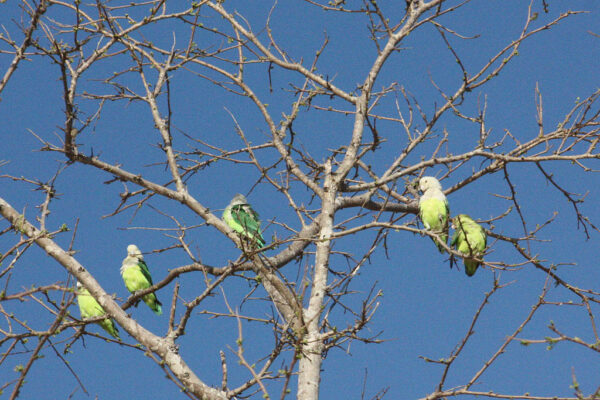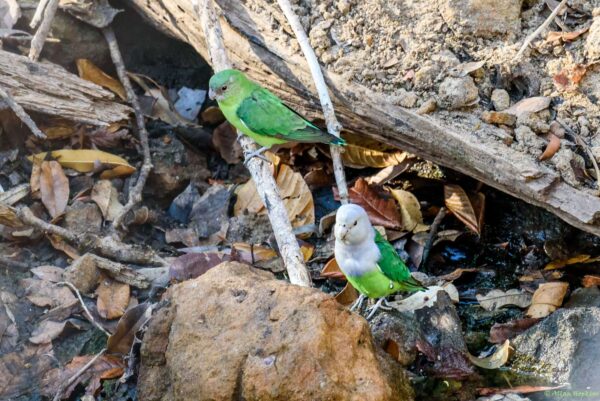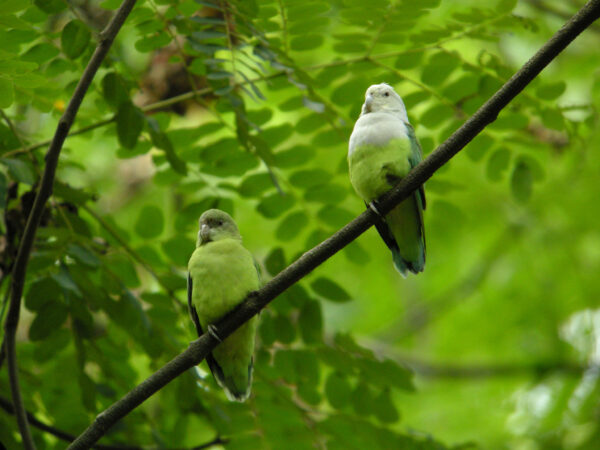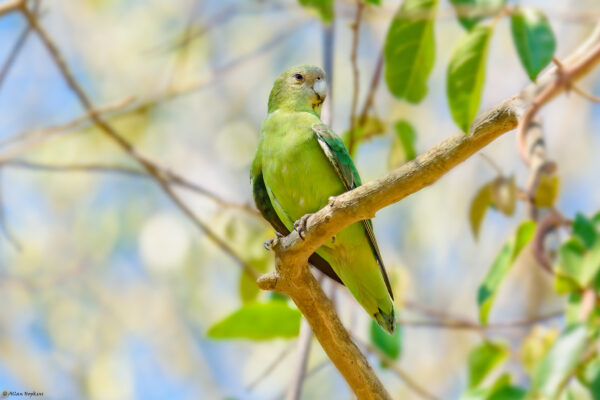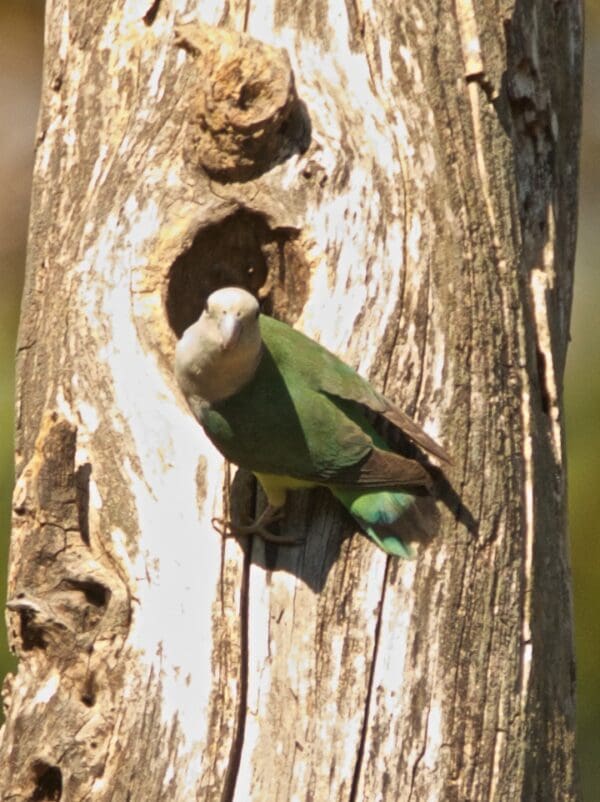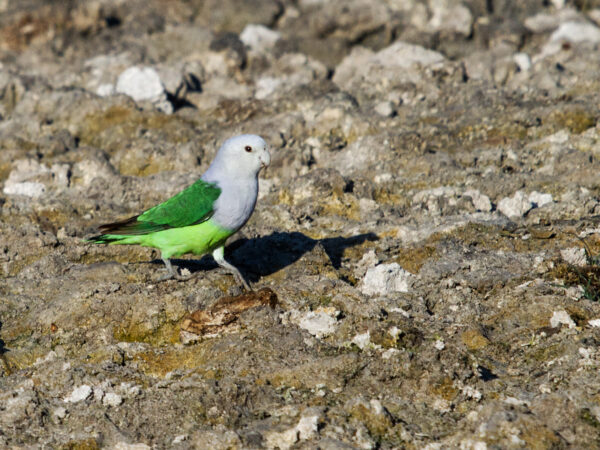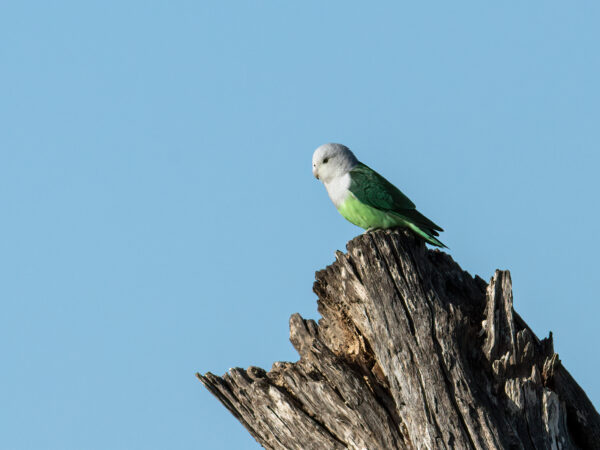Grey-headed Lovebird
Also known as:
Madagascar Lovebird, Lavender-headed Lovebird
Also known as:
Madagascar Lovebird, Lavender-headed Lovebird
![© Zak Pohlen [CC BY-NC-SA 2.0] A wild Grey-headed Lovebird perches on a stick](https://parrots.org/wp-content/uploads/2024/04/wpt_Grey-headed-Lovebird_1290-15-1-e1731866391180-100x100.jpg)
![© nomis-simon [CC BY-NC 2.0] via Flickr Wild Grey-headed Lovebirds, male and female, perch on a spiky branch](https://parrots.org/wp-content/uploads/2023/01/wpt_Grey-headed-Lovebird_1290-14-100x100.jpg)
![© David Cook [CC BY-NC 2.0] via Flickr A wild male Grey-headed Lovebird perches atop a spiky branch](https://parrots.org/wp-content/uploads/2023/01/wpt_Grey-headed-Lovebird_1290-12-100x100.jpg)
![© Francesco Veronesi from Italy [CC BY-SA 2.0] via Wikimedia Commons A wild Grey-headed Lovebird perches on a branch](https://parrots.org/wp-content/uploads/2023/01/wpt_Grey-headed-Lovebird_1290-9-100x100.jpg)
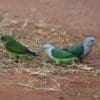
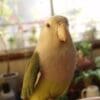
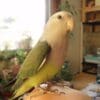
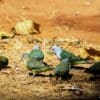
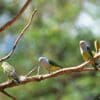
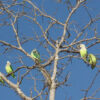
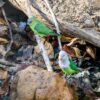
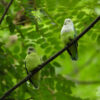
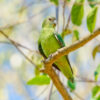
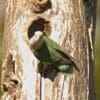
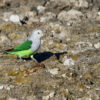
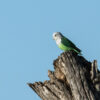
DID YOU KNOW?
The Madagascar or Grey-headed Lovebird lines its nest chamber with chewed leaf fragments or wood shavings, and also with grass stems carried by the female between her body feathers.

Agapornis

canus
Size:
14 cm (5.5 in)
Weight:
25-28 g (0.8-1.0 oz)
Subspecies including nominate:
two: A.c. canus, A.c. ablectanea
Colour Adult:
A.c. canus: Male-light grey head, neck, and breast; black underwing coverts; green tail; abdomen yellow/green; upperparts darker yellow/green. Beak grey/white. Eye dark brown. Female-green head, neck and breast; underwing coverts green.
A.c. ablectanea: Both adults in general darker blue/green with less green/yellow; head and breast of male deeper and more purple-grey.
Colour Juvenile:
A.c. canus: As in adults but in male grey head washed with green. Beak yellow with black at base.
Call:
Calls are shrill and metallic while in flight and at roost before nightfall. Also quiet chattering. When alarmed high pitched notes given.
More Information:
Content Sources:
CITES
BirdLIfe International
Cornell Lab of Ornithology/Birds of the World
Parrots: A Guide to Parrots of the World, Juniper and Parr, 1998
Parrots of the World, Forshaw and Cooper, 1977. 2010 edition
Parrots of the World, Forshaw, 2006.
Parrots: Status Survey and Conservation Action Plan, Snyder, McGowan, Gilardi and Grajal, 2000.
Lexicon of Parrots, Thomas Arndt.
Parrots in Aviculture, Low, 1992.
Psittacine Aviculture, Schubot, Clubb and Clubb, 1992.
Captive Status:
Rare
Longevity:
10-20 yrs
Housing:
Enclosure or aviary, indoors if in cold weather, minimum length 1.2 m (4 ft).
Diet:
Small seed mix such as: canary, millet and oats; provide small amounts of hemp in cold weather; apple and other fruits if taken; green leaves such as: Swiss chard, lettuce, sowthistle, dandelion, chickweed; willow catkins; spray millet; rearing food made with hard boiled egg, wholegrain bread and carrot, all ground to crumbly consistency, when rearing young; complete pellet.
Enrichment:
Avid chewers so provide bird-safe wood toys, fir and pine branches, heat sterilized pine cones, vegetable tanned leather toys. Also provide water for bathing.
Nest Box Size:
Vertical box 6″ x 6″ x 6″ (15.2 cm x 15.2 cm x 15.2 cm).
Clutch Size:
5-7
Fledging Age:
6 weeks
Hatch Weight:
—
Peak Weight:
—
Weaning Weight:
—
World Population:
Unknown, stable but heavily traded.
IUCN Red List Status:
Least Concern
CITES Listing:
Appendix II
Threat Summary:
Heavy trapping; between 1981 and 2005, 107,829 individuals were recorded in international trade. Local trade is common. Now reported as rare in the eastern portion of the country. Generally common but are uncommon in the east and rare on the High Plateau. Population on Mauritius is apparently now extinct. Those on the Comoros are trapped for trade.
Range:
A.c. canus: Madagascar except southwestern dry zone; introduced to Comoro Islands, Seychelles, Rodrigues and Reunion.
A.c. ablectanea: SW Madagascar.
Habitat:
Found in sparsely wooded areas, palm savanna, forest edge, degraded forest, scrub and agricultural land such as rice fields. Also seen around towns and villages. Up to 1500 m (4920 ft).
Wild Diet:
Diet includes fruits and grass seeds, including commercially grown elephant grass Panicum maximum in Seychelles. In one case on Comoros seen consuming unopened flowering shoots of the grass Stenotaphrum micranthum. Rice is sought where set out to dry.
Ecology and Behaviour:
Social, usually found in flocks of up to 30 individuals but may congregate in larger numbers where food is plentiful. Will associate with the Madagascar Red Fody, Sakalava Weaver and the Madagascar Mannikin. Roosts communally on bare branches.
Clutch and Egg Size:
5-7 rounded eggs, 19.0 x 16.0 mm (0.7 x 0.6 in).
Breeding Season:
November-December; nest cavity lined with chewed leaf litter, grass and bark.
Related Links:
